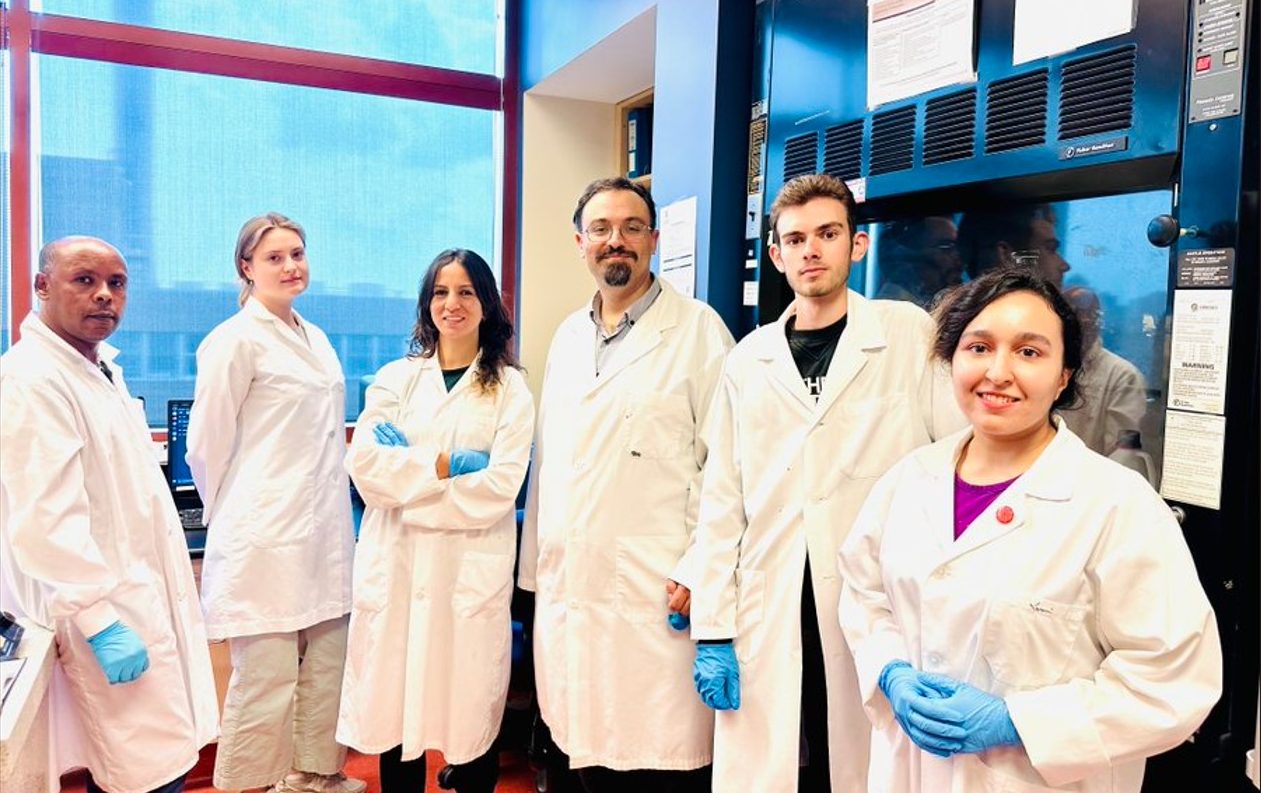
The Zovoilis research team at the Paul Albrechtsen Research Institute.
UM researchers using AI to improve cancer research and early detection of genetic diseases
Groundbreaking genomics method has potential to uncover insights previously missed
UM researchers recently developed a new genomics method with the potential to reveal the genetic mechanisms behind human health and disease. The recent publication in the journal Genome Biology offers an innovative new pathway to study the root causes of diseases like cancer and dementia to someday allow for early detection.
“My lab applies what we call next-generation sequencing and bioinformatics to magnify the impact of recent advances in AI algorithms. We collaborate with researchers across the country to position Canada at the forefront of this important new field of study,” says Dr. Athanasios Zovoilis, associate professor of biochemistry and medical genetics in the Max Rady College of Medicine.
Each day, researchers employing next-generation sequencing identify important clues in the non-coding segments of our DNA, once referred to as “junk DNA.” These segments contain clues about the presence of diseases. This breakthrough by the Zovoilis team seeks to repurpose lab equipment originally designed to read only mRNA, the coded sections of genetic material, to also study the non-coding segments of our DNA, called non-coding RNAs.
“The right equipment for this new field of study has been in our lab for some time, but we lacked the tools to use it to its fullest potential, until now,” says Zovoilis. “The impact of employing AI and novel genomics approaches is that researchers across the world can now leverage next-generation sequencing in the new field of epitranscriptomics, exploring the genetic interactions of non-coding RNAs.”
For the past two decades, researchers around the world have used precision tools to sift through non-coding RNAs and pinpoint the roughly three per cent of coded sequences. As part of the Canadian Epitranscriptomics Project, Zovoilis is mobilizing this technology to create the “Epitranscriptome Atlas” to fill in the missing 97 per cent of our genome and advance understanding of how changes in non-coding RNAs can cause disease.
“If we imagine the human genome as an atlas of the earth, with each gene represented by one satellite image, we have so far revealed fewer than 36,000 of the necessary 1.2 million images to complete our atlas. The mapped RNA sequences represent specific human tissues, and we are now able to begin filling in large sections of our atlas to pinpoint the genomic locations of diseases and other important biological functions for the first time.”
Dr. Athan Zovoilis directs a bioinformatics research program at the Rady Faculty of Health Sciences and CancerCare Manitoba’s Paul Albrechtsen Research Institute.
Research at the University of Manitoba is partially supported by funding from the Government of Canada Research Support Fund.






